DIY Fruit Wash for Clean Eating
on Mar 30, 2024
This post may contain affiliate links. Please read our disclosure policy.
This week I’m showing you my fruit wash to reduce pesticide and bacterial residue. I am torn between the desire to buy organic produce and the reality that it’s just not in our budget right now. I do grow a lot of my own organic produce in the summer, but in the winter I buy conventionally grown produce to keep my family satisfied.
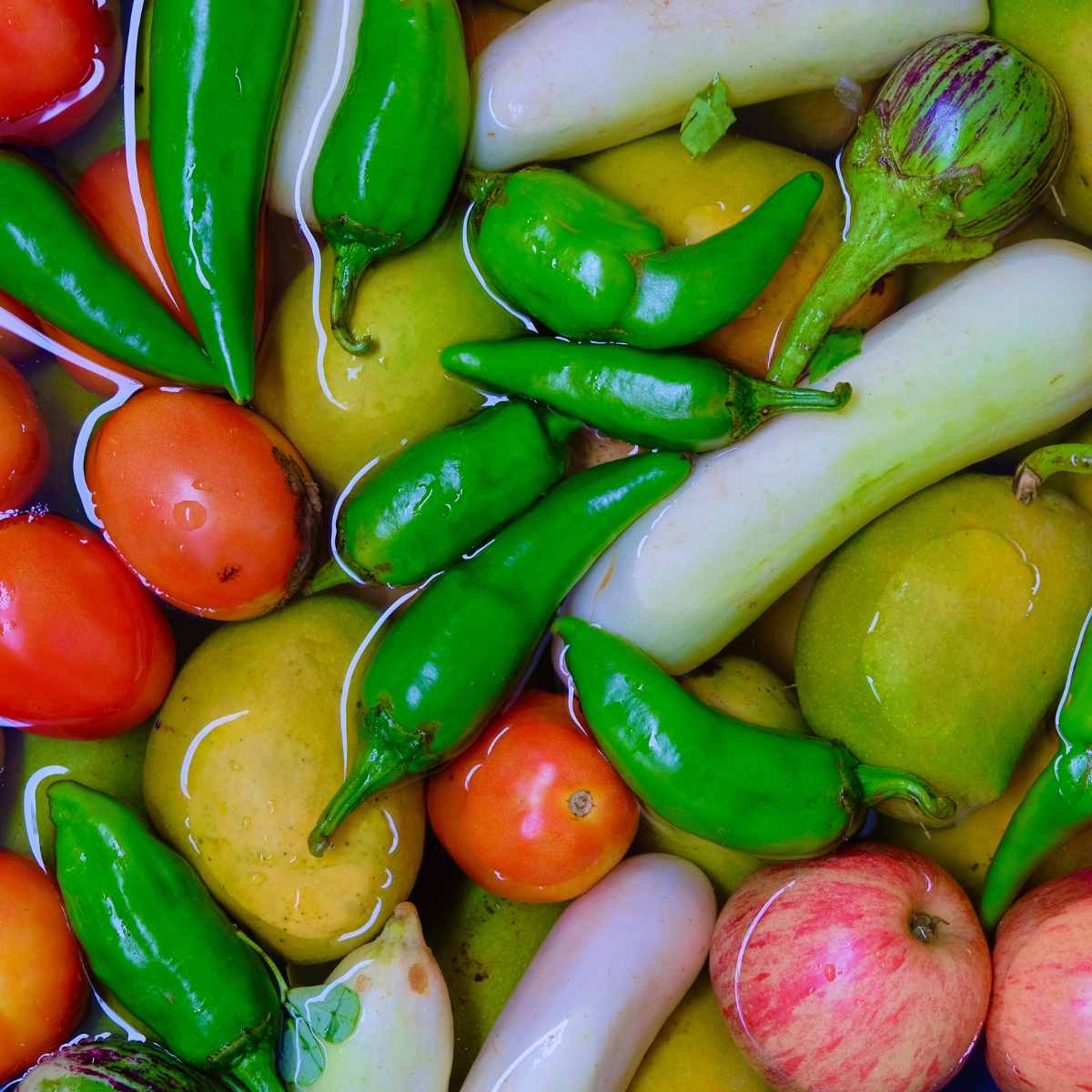
Table of Contents
Why Make DIY Fruit & Veggie Wash
The Environmental Working Group put together a list of the Dirty Dozen and the Clean Fifteen fruits and vegetables. As the names suggest, the Dirty Dozen are the fruits and veggies with the most pesticide residue and the Clean Fifteen have the least.
Dirty Dozen
The Dirty dozen fruits and vegetables are the most contaminated with pesticides. EWG recommends buying organic of these whenever possible.
- Strawberries
- Kale, mustard greens, collard greens
- Grapes
- Peaches
- Pears
- Nectarines
- Apples
- Peppers
- Cherries
- Blueberries
- Green Beans
Pin this now to find it later
Pin It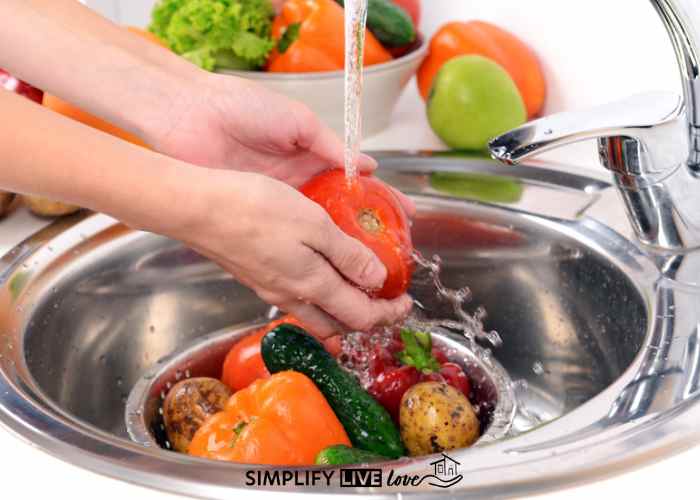
Clean Fifteen
The fruits and vegetables with the least amount of pesticide contamination include:
- Avocadoes
- Sweet Corn
- Pineapple
- Onions
- Papaya
- Frozen Sweet Peas
- Asparagus
- Honeydew
- Kiwi
- Cabbage
- Watermelon
- Mushrooms
- Mangoes
- Sweet Potatoes
- Carrots
Have you ever watched how people handle fruits and veggies in the store? How many people have touched your apples? And how were they handled before they even got to the store?
I want to keep my family healthy from disease and give them food that is as free of pesticides as I can. I garden organically as much as I can, but sometimes need to buy produce as well. One way for my family to eat cleanly is washing fruits and vegetables well.
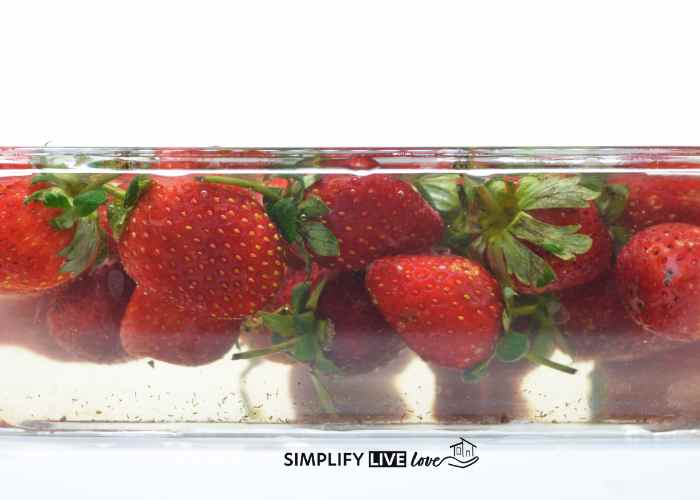
Supplies for Fruit and Veggie Wash
- Vinegar
- Water
- Colander
- Large Bowl or Bucket
How to Use DIY Fruit and Vegetable Wash
First, I soak my fruits and veggies in water and vinegar. I am not very scientific, so I just fill an old bowl with water and dump in vinegar. However, the correct ratio is really 1 part vinegar to 3 parts water.
Let them soak for about 30 seconds.
Swish the fruits and vegetables around and then drain into a colander. Rinse well with cold running water.
Once they are cleaned, prepare them however you’d like. If you are cooking vegetables, the heat will kill most of the bacteria. I still rinse them to remove the pesticides or anything else that might be one them.
The DIY fruit wash will remove bacteria, pesticides and waxy coatings. I store them “dirty” and wash them only before I need to use. Otherwise, they will spoil faster.
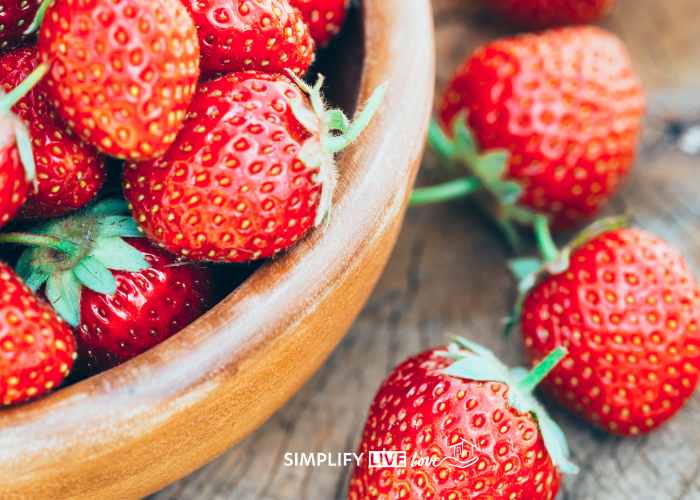
How Do I Know My Fruits and Vegetables are Clean?
Look at the water and you’ll see all the dirt and residues that came off. America’s Test Kitchen has also done tests to show the effectiveness of fruit and vegetable washes.
In my opinion, buying or growing our own organic produce is the best way to stay safe. However, cleaning my fruits and veggies in this manner reassures me that I am doing my best to keep my family safe from harmful substances.
Do I Need to Rinse the Homemade Fruit Wash Off?
Yes! After soaking for 30 seconds, rinse the fruits and veggies to make sure any residue is rinsed away as well as any remaining vinegar.
If you only soak and don’t rinse, the fruits and vegetables might still have contaminants on them.
Will My Fruit Taste Like Vinegar?
Use a correct ratio of vinegar to water and then rinse produce thoroughly. There’ll be no vinegar taste leftover from the DIY fruit wash.
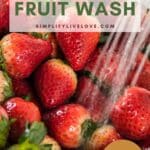


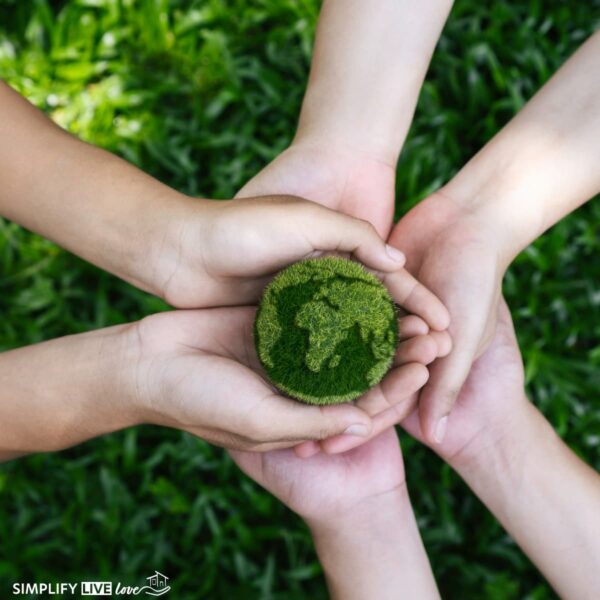










awesome tip! hope you link up next week, too! http://juliecache.com/2011/04/25/frugal-tuesday-tip-4/.html
I hear ya on buying organic. I would love to buy all organic but unfortunately it's not in our budget either. I like this idea of rinsing. Thanks for linking up!
Very useful post.